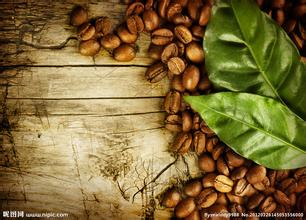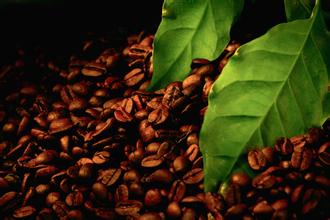Papua New Guinea Coffee Bean Flavor Description Characteristics Taste Treatment Grind Scale Introduction
Flavor description characteristics of Papua New Guinea Coffee beans A brief introduction to the Grinding scale of taste treatment
Rich sour aroma, a hint of jasmine, smooth taste, coffee in the mouth appears to be very clean, no extra taste, after the coffee is swallowed, the aftertaste is very long
Papua New Guinea's top coffee beans (PNG AA) are as beautiful and precious as the country's national bird of paradise. As coffee is widely grown in highlands between 1300 and 1800 meters above sea level, it is usually full-grained and varied in taste, with pleasant acidity and fruit-like sweetness. PNG coffee beans are carefully washed Arabica beans with a texture as strong and mellow as a Van Gogh painting. Whether it is used to mix Italian products or general mixed coffee, it can make up for the lack of sour coffee.
The baking effect at the beginning of the second explosion is very good, and most of the beans are stretched out and very full. Drink immediately after baking, although it is not the best drinking time, but the taste is still relatively clean, with only a light miscellaneous smell, which may be caused by the gas not released from the freshly baked beans. But the overall sense of balance is better, after the taste is smooth, the rhyme is long-lasting.
The coffee industry plays an important role in the country's economy. More than 1 million people are directly and indirectly engaged in the industry. The government encourages planting by offering a minimum purchase price. The industry itself is controlled by the Coffee Industry Council (Coffee Industry Board). The commission is located in Goroka, in the eastern part of the island, while exports are handled by private companies.
The frost in 1975 destroyed most coffee crops in Brazil, but stimulated the development of coffee in Papua New Guinea. The Government has implemented a scheme to finance the creation of about 20 hectares of coffee plantations in rural or collective land ownership. This measure has indeed increased the penetration of coffee in the local economy, with an annual output of 1 million bags by 1990.

Important Notice :
前街咖啡 FrontStreet Coffee has moved to new addredd:
FrontStreet Coffee Address: 315,Donghua East Road,GuangZhou
Tel:020 38364473
- Prev

Treatment of Starbucks Uganda Coffee beans
The way Starbucks treats Ugandan coffee beans Uganda produces one of the highest coffee production in Africa, accounting for more than 70% of its total exports. In the 1960s, Ugandan coffee production remained at 3.5 million bags a year. By the mid-1980s, coffee production had dropped to 2.5 million bags a year, mainly for political reasons. But now coffee production is on the rise again, currently about 3 million bags a year.
- Next

Description of the Standard Flavor of hand-washed Cochel Coffee beans washed by Yega Xuefei
Description of the standard flavor of hand-washed Kochel coffee beans Yega Xuefei is actually constructed by surrounding coffee communities or cooperatives, including Edido Idido, Hafusa Harfusa, Hama Hama and Biloya near Misty valley, all washed, but there are also a small number of high-quality beans engraved in the sun to enhance the charming fruit aroma and mellow thickness. These mountains
Related
- Guji coffee producing area of Guji, Ethiopia: Humbela, Shakiso, Wulaga
- What is the most expensive variety of Qiloso in BOP multi-variety group?
- How to store the coffee beans bought home?
- Why are Yemeni coffee beans so rare now?
- Ethiopian Sidamo all Red Fruit Sun Sun Santa Vini Coffee beans
- SOE is mostly sour? What does it mean? Is it a single bean? what's the difference between it and Italian blending?
- Is Italian coffee beans suitable for making hand-brewed coffee?
- How to choose coffee beans when making cold coffee? What kind of coffee beans are suitable for making cold coffee?
- Just entered the pit to make coffee, what kind of coffee beans should be chosen?
- Can only Japan buy real Blue Mountain Coffee? What are authentic Jamaican Blue Mountain coffee beans?

